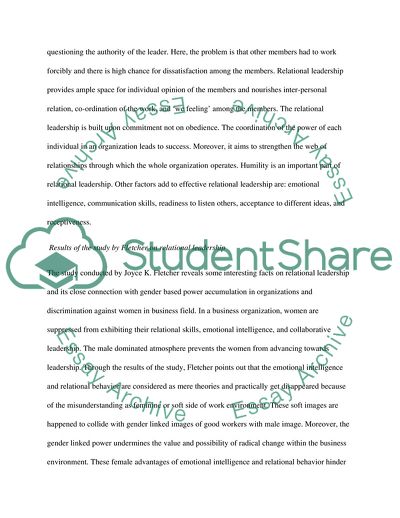Cite this document
(Relational Leadership in Traditional Organizations Assignment Example | Topics and Well Written Essays - 1500 words, n.d.)
Relational Leadership in Traditional Organizations Assignment Example | Topics and Well Written Essays - 1500 words. https://studentshare.org/gender-sexual-studies/1722141-assignment-2
Relational Leadership in Traditional Organizations Assignment Example | Topics and Well Written Essays - 1500 words. https://studentshare.org/gender-sexual-studies/1722141-assignment-2
(Relational Leadership in Traditional Organizations Assignment Example | Topics and Well Written Essays - 1500 Words)
Relational Leadership in Traditional Organizations Assignment Example | Topics and Well Written Essays - 1500 Words. https://studentshare.org/gender-sexual-studies/1722141-assignment-2.
Relational Leadership in Traditional Organizations Assignment Example | Topics and Well Written Essays - 1500 Words. https://studentshare.org/gender-sexual-studies/1722141-assignment-2.
“Relational Leadership in Traditional Organizations Assignment Example | Topics and Well Written Essays - 1500 Words”. https://studentshare.org/gender-sexual-studies/1722141-assignment-2.


